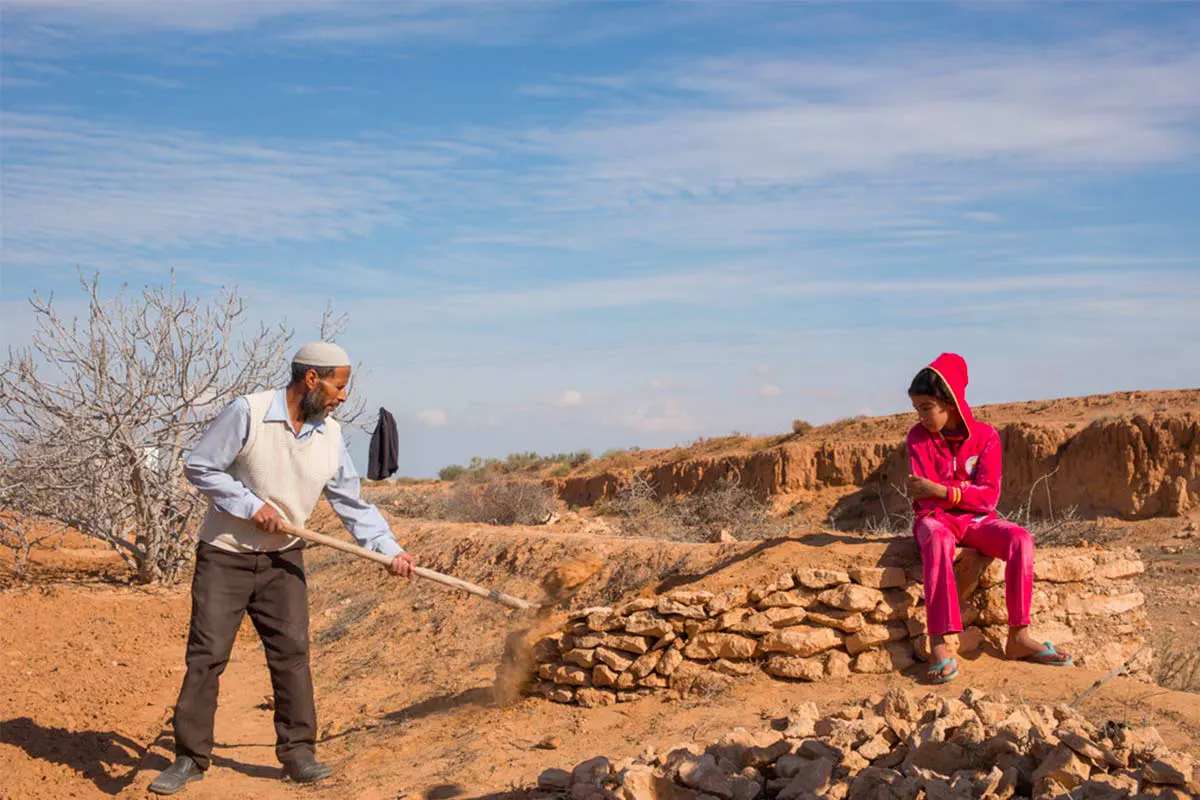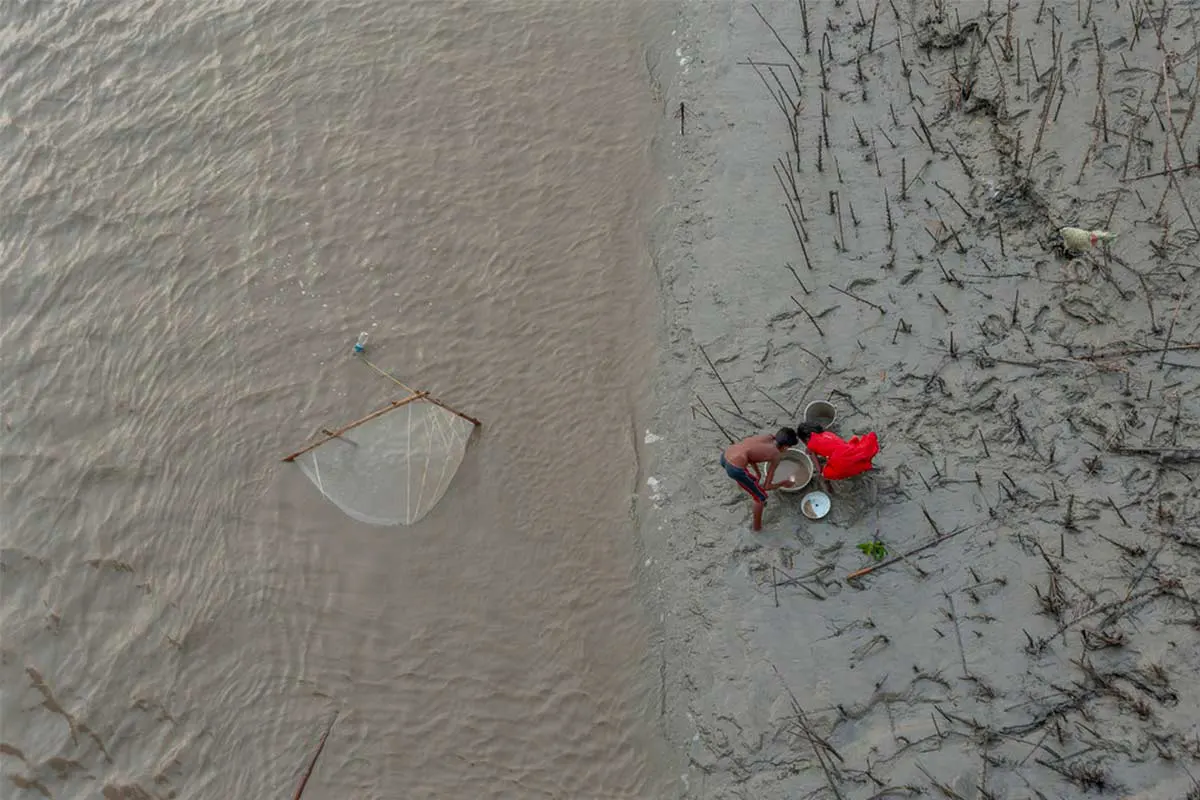The 2019 EEA Indicator Assessment analysis found that agriculture, forestry, and fishing’s water abstraction make up 58.3 percent of the total
How are droughts monitored?
The so-called drought indicators represent statistical deviations from the long-term climatology of a specific area and provide information about the severity of the possible event.
They relate to various parts of the hydrological cycle. Among these indicators are precipitation, soil moisture, reservoir levels, and other factors associated with drought, such as vegetation water stress.
What is a drought?
Droughts are recurring climate events. Said events can be caused by a shortage of rainfall over a prolonged period, too little water being available for vegetation to thrive, or high-temperatures-induced evapotranspiration inducing a negative water balance.
There are three types of droughts. Meteorological droughts are periods characterized by an abnormal precipitation deficit compared to the long-term average conditions of the area. If a meteorological drought causes water availability issues impacting crops and vegetation, it’s called an agricultural drought.
When the effects of periods of low precipitation on the surface or subsurface water supply appear, it’s a hydrological drought. Socioeconomic drought is characterized by a disparity between the supply and demand of various goods. In a socioeconomic drought, the demand surpasses the available supply because of a weather-related shortfall in water availability.
«Drought means that you have a reduction in rainfall for a long period. That reduction in rainfall has an impact on groundwater level, in particular, but also surface water like lakes and rivers. Water scarcity refers to the availability and accessibility of water for society and nature. If you don’t replenish the groundwater, the groundwater level will become lower and lower, making it more difficult to pump up what’s needed for society». Explained Mats Eriksson, a Senior Manager and water and climate expert at the Stockholm International Water Institute (SIWI).
Droughts and water scarcity in Europe
While Europe has decent resources in terms of water, its scarcity is becoming increasingly frequent and widespread. According to the European Environment Agency (EEA), water scarcity impacts twenty percent of European territory and thirty percent of the European population on average.
The problem of water scarcity results from an imbalance where the demand exceeds supply, which climate change exacerbates, given its impact on water storages such as snow, soil water, and ice.
At the root of water scarcity, there can be infrastructural and political reasons. The authorities may fail to meet the public’s needs, and the infrastructures that provide water may be substandard. Water scarcity is a global issue hitting every continent in a different manner, with poorer and marginalized communities being hit the hardest.
Though water scarcity in Europe is not limited to its Southern part, this phenomenon is most common in the area. The issue is heightened in summer. This increase is due to the higher abstraction rates, which are higher from agriculture in the growing season, and from the public water supply during the tourist season.
«Europe, it’s a fairly large place on the planet. If we look at Southern Europe, much of it is part of what we call the Mediterranean climate. The Mediterranean climate is represented by dry and hot summers and mild and wet winters. Under normal conditions, in the year cycle, you have a relatively long dry, and hot period in the summer. Then water is replenished during the winter when you have milder weather, and that’s when you get a lot of precipitation. This is part of the natural cycle. But drought intensification, heat waves, and so on have occurred more often over the years and in the last decade or decades. Although it is difficult to attach to climate change, over time, you’ll see that the number and the intensity of droughts increased».
A July of drought in Europe
According to the analysis conducted by the JRC Global Drought Observatory (GDO) of the Copernicus Emergency Management Service (CEMS), the month of July was characterized by an expansion and worsening of the drought that had been hitting various areas of the continent since the beginning of the year 2022.
A severe lack of precipitation and the early heatwaves of May and June generated dry conditions with a lack of rainfalls affecting European rivers. These factors hit the energy sector, as the decreased stored water volume impacted hydropower generation and cooling systems.
Though some limited regions of France and the eastern Mediterranean experienced recovery, areas such as northern Italy and south-eastern France, some parts of Hungary and Romania, which were hit by drought in spring, experienced similar or worse conditions.
Heat and water stress impacted both crop yield and crop yield potential. The competition for water resources in July was high and started early.
An August of drought in Europe
The analysis conducted by the GDO showed that the dry conditions were induced by the severe lack of precipitation and a series of heatwaves that hit the continent from May onwards. The precipitation deficit kept on affecting the European rivers, and the reduced stored water volume kept on impacting the energy sector in August.
Summer crop yields have suffered due to the water and heat stresses that reduced them. Grain maize, sunflowers, and soybeans are the crops that took the brunt of the situation.
Though the precipitations that took place in mid-August 2022 may have attenuated the drought conditions in some European areas, in others, their benefits were limited, as challenges, damages, and losses came with the associated thunderstorms.
According to the Standardized Precipitation Index (SPI), the negative precipitation anomalies that characterized the trimester ending on August 10, 2022, hit a wide area. This included Ukraine and Spain, central and southern Portugal, central Italy, Hungary, large regions of the western Balkans, Moldova, Romania, Slovakia, southern France, southern Germany, and Switzerland in particular.
The impact of droughts on European rivers
The chief European rivers have been impacted by the extreme drought conditions that characterized this year’s European summer. Among them the Danube River, one of the principal trade routes of Western Europe.
On August 20, 2021, and August 20, 2022, the Copernicus Sentinel-2A and Sentinel-2B satellites captured evidence of the water scarcity hitting the river at the border between the Easter-European courtiers of Bulgaria and Romania.
In some areas, such as the city of Tulcea in Northern Dobruja, Romania, the Danube’s water level has reached a value below that required for navigation, rendering the river unnavigable, making the practice of dredging needed to permit circulation.
Where does European drinking water come from?
With a long-term average of 4,560 m3 per inhabitant, the European annual renewable freshwater resources are pretty ample, according to the Freshwater Information System for Europe (WISE-Freshwater). Given the substantial climatic differences between the various states in the continent, freshwater resources variate across Europe.
In the continent, about seventy-five percent of the total water is abstracted from rivers and reservoirs, making surface waters the most utilized freshwater source in Europe. Around twenty-five percent of the whole water abstracted is from groundwater.
What is the chief source of water abstraction at the European level?
The 2019 EEA Indicator Assessment analyzed the water use in Europe by economic sector in 2017. Their analysis showed that the water abstraction for agriculture, forestry, and fishing makes up fifty-eight-point-three percent of the total.
Electricity, gas, steam, and air conditioning supply require eighteen-point-two percent of the total annual water abstraction. Ten-point-six percent is utilized for mining and quarrying, manufacturing, and construction. Households use up nine-point-six percent of the yearly water abstraction.
«Groundwater is, in most cases, the primary source for both nature and society. In Northern Europe, like Scandinavia, you have a lot of open-surface lakes and swamps. In that case, that is being used as the water supply for cities and other purposes. But in large parts of Europe, you don’t have as many lakes or other open sources. So you depend on the groundwater». Said Eriksson.
What measures are implemented to combat water scarcity?
According to a study by the Heinrich-Böll-Stiftung, Friends of the Earth Europe, and BUND, agriculture is responsible for ninety-two percent of the global water footprint. Of this, twenty-nine percent goes towards animal farming. On a global level, agriculture employs seventy percent of the available freshwater, three times more than five decades ago.
Water leakage caused by the issues in the distribution network can exacerbate water scarcity. According to the Italian association Fondo per l’Ambiente Italiano (FAI), the dispersion is hefty in the civil sector, with losses amounting to forty-five-point-three percent. For irrigation, the water dispersion amounts to an estimated fifteen percent. Due to the network’s state, a significant amount of water is lost in the aqueducts, where an average of forty-one-point-four liters are lost per 100 injected into the distribution networks.
Implementation of water-rationing measures
At times of water scarcity, the measures employed by the authorities often target citizens and households’ water use, as exemplified by the water-rationing measures implemented in the spring and summer of 2022 in cities across the regions of Liguria, Lombardy, Piedmont and Trentino-Alto Adige in northern Italy.
Though total water abstraction has abated by seventeen percent in Europe between 2000 and 2017, the goal of reducing water abstraction to below twenty percent of the renewable freshwater resources set in the Roadmap to a Resource Efficient Europe has not been achieved in all European river basins.
Mats Eriksson
Senior Manager and water and climate expert at the transboundary water cooperation department at the SIWI. Eriksson has a background in glaciology and Ph.D. in Geography, obtained in 1998.




















